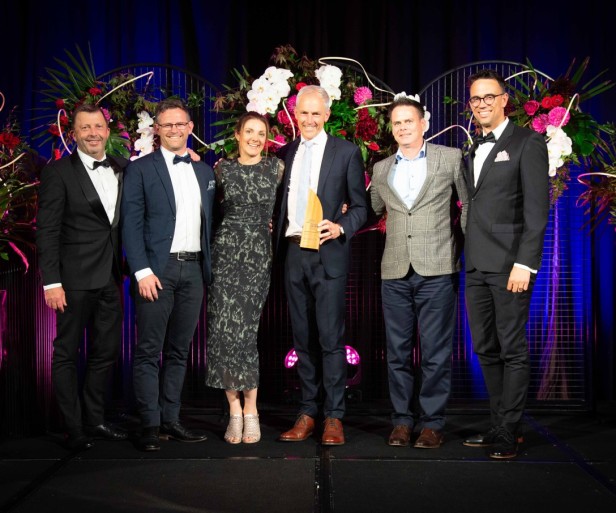Should Queenstown’s tourism industry aim to be net Carbon Zero by 2030? Is it achievable?

Stephen England-Hall
RealNZ chief executive
“As an aspiration, it’s absolutely brilliant. It reminds me of JFK’s famous speech, ‘before this decade is out... we’ll land a man on the Moon’. And then, of course, it happened. It’s the right thing to put out there, and in the process of trying to achieve it, a lot of things can be accomplished.
“It’s a major project, highly ambitious and a lot of change is required. There is technology being developed, whether EVs, hydrogen fuel cells, but then it comes down to the commercial and practical steps needed implement it.
“For businesses like ours, we have asset lifecycle management practices, different machines and pieces of equipment that need to be replaced over time. Each time that happens, the opportunity arises to do that in a way that has a lower environmental footprint or zero emissions profile. If you apply that across all the businesses in our sector and region, and layer it, then there’s a bunch of stuff that will naturally evolve in that direction, and then there will be some things that need a bit of a shove, based upon capability, technological readiness or energy supply.
“Things like hydrogen or electric coaches from Queenstown to Te Anau, the technology exists and mathematically that works, but it comes down to where are you going to get your hydrogen or electricity from, and who’s going to build that infrastructure. Individual tourism operators are unlikely to suddenly get into the hydrogen manufacture industry, so there needs to be a broader conversation at a regional level that lends itself to solving some of those bigger challenges.
“Like the Moon landing, it needs a collaboration of many parts of the economy to make it work.”
The plan could see Queenstown Lakes become a world leader in tourism decarbonisation, a ‘first customer’ for emerging technologies, such as carbon capture, electric helicopters and the like.
Pierre Marasti
Member of Extinction Rebellion
“I do feel that there is a genuine desire in the tourism industry to do better. But I think at some point, we need to be realistic.
“Regenerative tourism actually is an oxymoron, especially if we are talking about international tourism. New Zealand’s international flights are the equivalent of 10 to 12% of the national emissions, roughly around 10 megatons per year.
“To stay within 1.5 degrees of warming, the global carbon budget would allow 5 million humans to emit 170 megatons of carbon, so NZ’s international aviation alone would use our whole budget in 17 years.
“The only sustainable option for the tourism industry is to scale down and to focus on domestic tourism alongside a decarbonisation of our national transport systems.
“Carbon capture systems already exist but, besides the environmental cost of manufacturing these systems, they use a lot of energy. We would need a lot of excess renewable electricity to power them which of course we don’t have.
“Actually, the only working technology we have to remove carbon from the atmosphere are trees... but then we need to consider land use. Forests have been replaced by farmland.
“It’s positive that the industry wants to do better but we need to make some choices. Do we want a few more years of economic growth through international tourism or do we want a liveable future?”
Paul Anderson
NZSki chief executive
“It’s laudable to have a goal like that and I think it’s very achievable for us as a resort to get to carbon zero. It’s the right thing to do for Destination Queenstown to take a strong position, a leadership position, not just in this region, but in the industry. It’s excellent.
“The important thing for us as operators as we go forward is to invest in the technology that will produce emission reductions, rather than just rely on offsets.
“It’s a massive challenge but there are some answers. There are carbon zero fuels starting to be produced. Our grooming fleet is our biggest emitter, so that’s where our focus needs to be. We have a modern fleet and the tier five engines we use in all the modern machinery are able to take a fuel called HVO, which is a zero-carbon fuel [Hydrotreated Vegetable Oil, biofuel].
“It’s starting to be produced in commercial quantities in Europe, so a we need to see if we can get an energy company to supply it. That will need some national cooperation, support from Government, when you look at things like shipping and storage, the infrastructure.
“Most of our electricity is from renewable sources, our coaches remove cars from the road, and this year alone we’ve invested about $2 million worth of upgrades to our snowmaking equipment, which will improve the efficiency. It’s all those things that add up to contribute to that goal.”
David Gatward-Ferguson
Nomad Safaris owner / Operator
“It’s an exciting plan. We’ve been looking at ways to reduce emissions from our fleet and hopefully this will mean there’s some money available for research, because it’s not straight-forward at all.
“There are no vehicles we can buy that we can use for our operations, because they don’t have a large enough range. Electrification isn’t an option because the technology is just not up to doing what we do.
“We need to be able to carry six to eight people in each vehicle. If you look at our Tesla, it’s not an off-road vehicle, and it takes a maximum of three customers and a driver. So that makes the price per seat prohibitive and would price out most of our market. And electric vehicles don’t like hills. If you go from the bottom of the Remarkables to the top, driving carefully in the Tesla, you use 63km’s worth of electricity.
“The electric vans available have a lower range. A trip to Glenorchy just eats the juice, because it’s windy and hilly, so you’re on and off the accelerator all the time. So, a van would get to the other side of Glenorchy and there they would stay because Glenorchy doesn’t have the electrical infrastructure to put in fast chargers, like many places in the country.
“It’s aspirational but impractical at the moment.”









